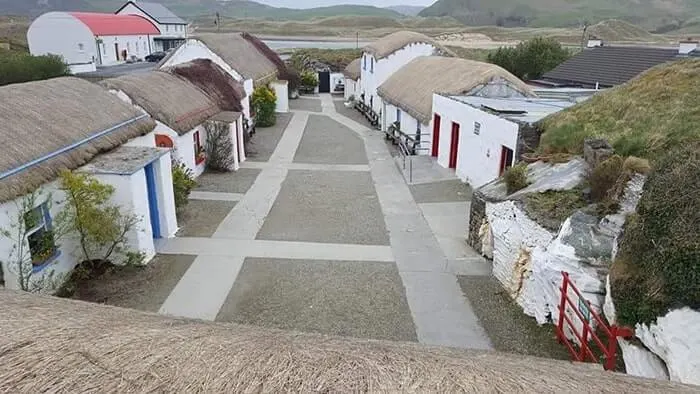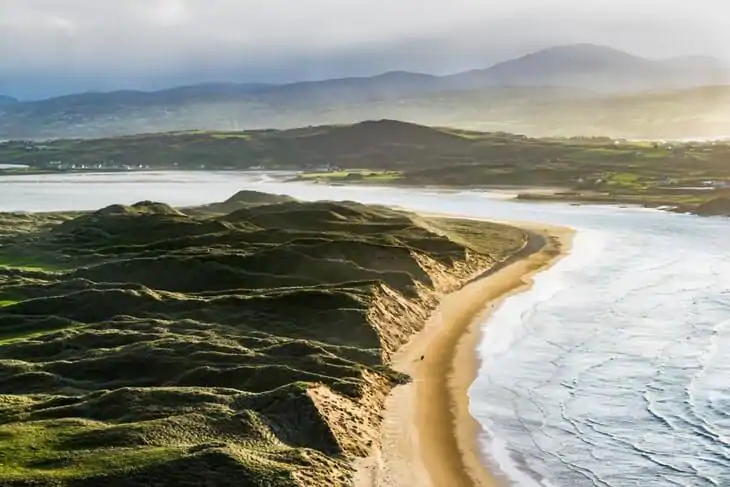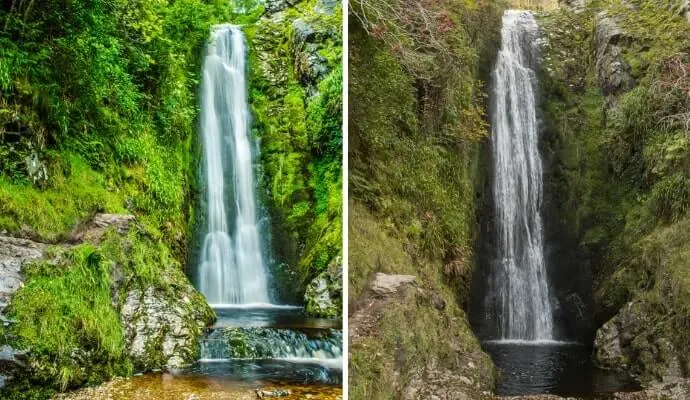If you’re in search of an incredible learning experience, Doagh Famine Village will be right up your street.
Telling the story of Irish life from the Great Famine of the 1840s all the way up to the present day, Doagh Famine Village is a unique attraction on the glorious Inishowen Peninsula.
Below, you’ll discover info on everything from the Doagh Famine Village tour to what to see and do close by. Dive on in!
Some quick need-to-knows about Doagh Famine Village

Photo via Doagh Famine Village on Facebook
Although a visit to the famine village is fairly straightforward, there are a few need-to-knows that’ll make your visit that bit more enjoyable.
1. Location
You’ll find Doagh Famine Village on the Inishowen Peninsula. It’s a 30-minute drive from both Buncrana and Malin Head and a 35-minute drive from Greencastle.
2. Opening hours
The famine village is open from the 17th March to the 12th October, 7 days a week from 10:00 to 17:00.
3. Prices
Entry to the village is €12.50 for adults, €6.50 for children under 16 and children under 4 go free (note: prices may change).
4. The tour
There’s brilliant guided tours of the famine village that taken between 30 and 45 minutes and that offer an insight into life in Ireland during one of the most turbulent points of its history.
5. Part of the Inishowen 100
The village is part of the scenic Inishowen 100 route which takes in the peninsula’s top attractions, from historical sites and beautiful beaches to mountain passes and more.
About Doagh Famine Village

Photo via Google Maps
Informative, emotive and at times humorous, the exhibition at Doagh Famine Village takes visitors through a range of spaces to tell the story of life in the area across almost two centuries.
Traversing everything from the road to peace in Northern Ireland to a look at Ireland in the ‘Celtic Tiger’ years and the recent economic collapse, Doagh Famine Village contains a wide variety of attractions.
Surprisingly, some of the original dwellings at Doagh which were still inhabited up to 20 years ago! A range of elements of Irish life are detailed at Doagh Famine village, with areas of note including insights into local food, cures and funeral customs.
Things to see at Doagh Famine Village

Photo via Doagh Famine Village on Facebook
There’s plenty of things to see and explore at Doagh Famine Village in Inishowen, from original thatched homes to scenes that shook many Irish families in times past.
1. Original thatched homes
One of the main attractions of any visit to Doagh Famine Village is the chance to see the original thatched homes. Maintained and rethatched every year using traditional methods, these unique homes are a treat to behold.
2. The Irish wake
In this corner of Ireland, many people continue to observe the tradition of the wake. This is when the remains of loved ones are kept in the home until burial, rather than being taken to a funeral home. The information on this custom at Doagh Famine Village includes a reenactment using models.
3. The eviction scene
A shameful chapter in Irish history, evictions were commonplace in the years after the famine as wealthy landowners sought to maximise profits from their holdings. This section of the village highlights what was a harrowing time for many families.
4. The Orange Hall
As anybody with even a basic grasp of Irish history knows, religion has played a major role in the island’s past. The Orange Hall charts the history of the local area’s Established Church followers, whose hero William of Orange lends his name to the building.
5. The safe house
Inspired by the experiences of Eddie Gallagher, a long term Republican prisoner, the safe house is an example of the secret places of refuge designed to hide those Republicans on the run. Home to hiding places and passageways, this area of the village offers a unique insight.
Things to do near Doagh Famine Village
If you’re visiting the Doagh Famine Village and you fancy exploring more of the area that surrounds it, you’re in luck – some of the best Donegal attractions are very close-by.
If you have some time on your hands, the Inishowen 100 drive is a great way to pack in lots of places to see on the peninsula. Here are some of our favourite stops.
1. Beaches galore (10-minute-plus drive)

Photo by shawnwil23/shutterstock.com
The Inishowen Peninsula is home to some of the best beaches in Donegal. Pollan Strand is a 9-minute drive, Tullagh is a 16-minute spin and Five Finger Strand is a 25-minute drive away.
2. Glenevin Waterfall (20-minute drive)

Photo left: Pavel_Voitukovic. Right: Michelle Holihan. (on shutterstock.com)
The stunning Glenevin Waterfall is one of a handful of hidden gems that many that visit Insihowen tend to miss. Make sure to pop this on your ‘to-visit’ list.
There’s a gorgeous walk from the parking area to the waterfall (takes about 20 minutes) and there’s a coffee truck on-site during the busier months.
3. Malin Head (30-minute drive)

Malin Head: Photo by Lukassek (Shutterstock)
If you fancy exploring Ireland’s most northerly point, take the 35-minute drive up to the mighty Malin Head and head for a ramble. You can stop at Mamore Gap en route!
FAQs about visiting the Famine village
We’ve had a lot of questions over the years asking about everything from when is it open to what is there to see.
In the section below, we’ve popped in the most FAQs that we’ve received. If you have a question that we haven’t tackled, ask away in the comments section below.
Is the Doagh Famine Village worth visiting?
Yes. This place immerses you in the story of life in the area across almost two centuries. It’s both educational and enlightening.
How much is it into the Famine village?
Entry to the village is €12 for adults, €6.50 for children under 16 and children under 4 go free (note: prices may change).
